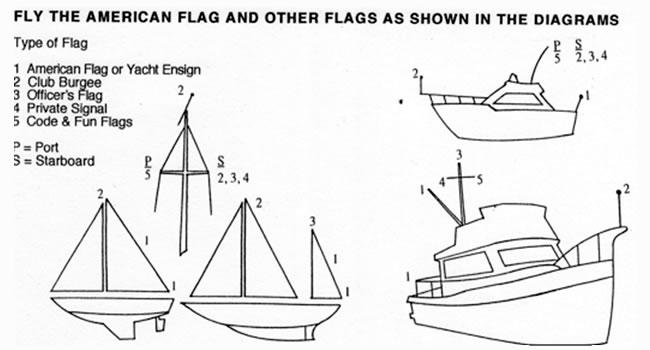In olden days, flags were the principle method of communicating from one ship or boat to another. You can still send messages via coded signal flags, but that practice has mostly fallen by the wayside with the advent of VHF radio. In today’s yachting world, flags are still used for different occasions and should be properly placed, respected and replaced when tattered.
The most often flown flags today are the US Ensign and officer flags, club burgees, and owners’ private signal flags:
THE US YACHT ENSIGN with 13 stars and a fouled anchor, or the American flag may be flown on the stern of all boats, although the 50-star American flag should replace the ensign in international waters.
THE CLUB BURGEE is generally triangular and carries the insignia of the owner’s club affiliation, allowing members to find one another at sea. Traditional practice was to fly the club burgee on a “pig stick” from the masthead of a sailboat. Nowadays, with antennas and windex aloft, the burgee is relegated to the starboard spreader. On a powerboat, it flies from a bow staff. It is permissible to substitute a private signal for the club burgee.
OFFICER FLAGS denote the rank of the owner within a club’s membership (commodore, vice-commodore, etc.). They are generally flown in combination with a club burgee on the starboard spreader of a sailboat, or at the highest point on a powerboat.
PRIVATE SIGNALS, or owners’ flags, are logos designated and personalized to the owner. They are usually swallowtail-shaped and might include a graphic of the owner’s initials, symbols of children, pets, businesses, hobbies, coats of arms, etc.
